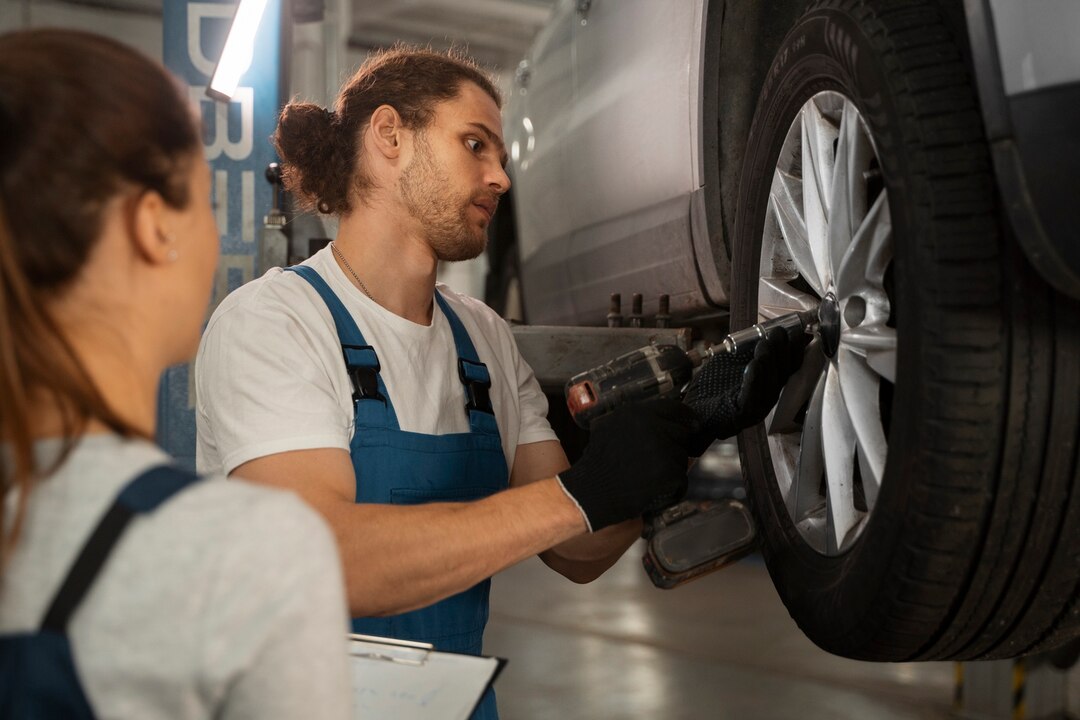Your car’s tie rods are crucial components of the steering system, responsible for connecting the steering rack or center link to the steering knuckles. Over time, wear and tear can lead to damage or failure of the tie rods, compromising your vehicle’s steering stability and safety. Recognizing the warning signs of failing tie rods is essential for maintaining control and preventing accidents on the road. Here are ten indicators that your car’s tie rods may need replacement:
- Uneven Tire Wear: Check your vehicle’s tires for signs of uneven or abnormal tire wear, such as excessive wear on the inner or outer edges. Misaligned or worn tie rods can cause improper tire alignment, leading to uneven tire wear and premature tire replacement.
- Loose or Wandering Steering: If you notice that your steering feels loose or wanders from side to side while driving, it could indicate worn tie rods. Loose tie rods can result in poor steering response and reduced control, making it difficult to keep your vehicle on course.
- Difficulty Steering or Turning: Difficulty steering or turning the steering wheel, especially at low speeds or when making sharp turns, may be a sign of worn or damaged tie rods. You may experience increased resistance or stiffness when attempting to steer, indicating a problem with the steering linkage.
- Clunking or Knocking Sounds: Listen for clunking, knocking, or rattling noises coming from the front end of your vehicle, particularly when driving over bumps or uneven road surfaces. These noises may indicate loose or worn tie rods that are no longer providing proper support and stability.
- Steering Wheel Vibration: Experiencing vibrations or shaking in the steering wheel, especially at higher speeds, can be a sign of worn tie rods. Vibrations in the steering wheel may indicate loose or damaged tie rod ends, affecting the alignment and stability of the front wheels.
- Excessive Play in the Steering Wheel: If you notice excessive play or free movement in the steering wheel, it could indicate worn or damaged tie rod ends. Excessive play means there is a delay or lack of response between turning the steering wheel and the vehicle’s actual movement, compromising steering precision and control.
- Visible Damage or Corrosion: Inspect the tie rod assemblies for any visible signs of damage, corrosion, or rust, especially around the ball joints and mounting points. Physical damage or corrosion can weaken the tie rods, leading to premature failure and potential safety hazards.
- Leaking Grease: Check for signs of grease leakage around the tie rod ends or boots. Grease leakage may indicate worn or damaged tie rod boots, allowing dirt and debris to enter the ball joints and accelerate wear. Leaking grease can also lead to inadequate lubrication, causing premature failure of the tie rods.
- Steering Wheel Off-Center: If your steering wheel is off-center or not aligned properly when driving straight, it may indicate a problem with the tie rod ends or steering linkage. Misaligned tie rods can affect the steering geometry, causing the steering wheel to veer to one side when driving straight.
- Vehicle Drift or Pull: Noticeable vehicle drift or pulling to one side while driving, especially at higher speeds, can be a sign of worn or damaged tie rods. Misaligned tie rods can cause uneven steering and handling, resulting in vehicle drift or pull to one side of the road.
If you observe any of these warning signs, it’s crucial to have your vehicle inspected by a qualified mechanic as soon as possible. Ignoring issues with your car’s tie rods can lead to unsafe driving conditions and potential accidents on the road. A professional diagnosis will help determine the extent of the problem and whether tie rod replacement is necessary to restore safe and reliable steering functionality to your vehicle.











